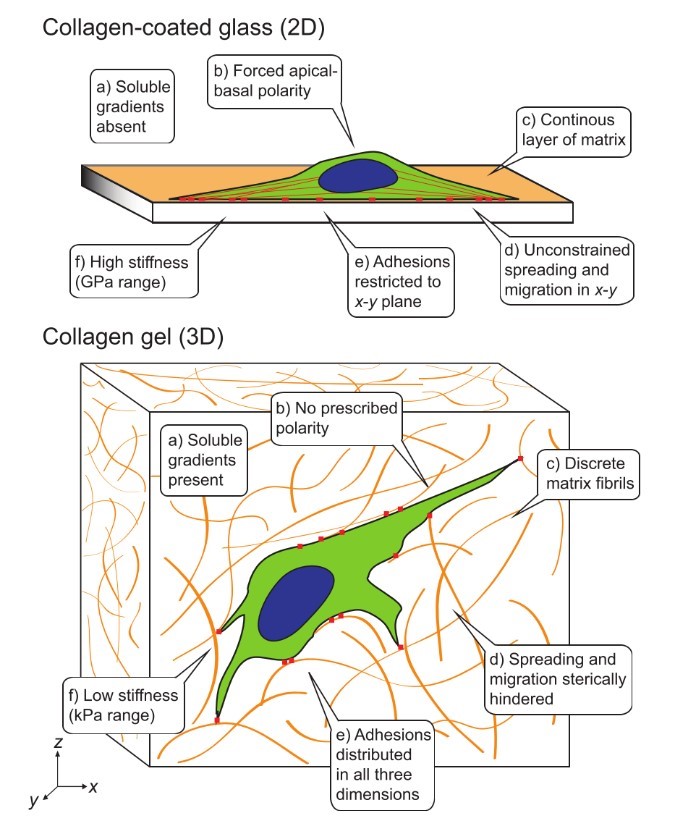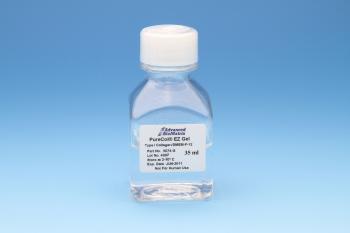3D Hydrogels
Easy Transition from 2D to 3D
Type I Collagen is the most widely used substrate for 3D hydrogels. For an easy transition from 2D to 3D cell culture, we created PureCol® EZ Gel.
PureCol® EZ Gel is a ready-to-use type I collagen solution that forms a 3D hydrogel by simply warming to 37°C in an incubator. The collagen is already neutralized, making it a one-step product for 3D cell culture.
The product comes sterile and ready for cell addition and 3D hydrogels.

Why 3D Matters
The behavior of 3D-cultured cells is more reflective of in vivo cellular responses. 3D cell culture systems represent more accurately the actual microenvironment found in tissues in the body. Research has shown that cells in a 3D culture environment differ morphologically and physiologically from cells in a 2D culture environment.
The additional dimensionality of 3D culture is the crucial feature leading to the difference in cellular responses because not only does it influence the spatial organization of the cell surface receptors engaged in interactions with surrounding cells, but it also induces physical constraints to cells.
These spatial and physical aspects in 3D cultures affect the signal transduction from the outside to the inside of the cells, and ultimately influence gene expression and cellular behavior. The adjacent diagram provides a depiction of the effects of 3D verse 2D of cell culture systems.

3D Cell Culture (versus 2D)
Differentiation - Increases the differentiation activity of certain stem cells and increases the duration of undifferentiated state of other stem cells
Drug Metabolism - Decreases the anti-proliferative effect of some anticancer drugs and increases albumin and urea production
Gene Expression - Causes different levels of gene expression and enables expression of some genes that do not express in 2D
General Cell Function - Enhances performance and functional activity of human liver cells and induces well developed cell-cell contact
Morphology - Induces clear differences in morphology, arrangement and polarization and increases the neurite extension length
Proliferation - Increases growth rate and attachment of mesenchymal stem cells and decreases proliferation of breast cancer cells
Response to Stimuli - Decreases responsiveness to intracellular Ca2+ and decreases response to K+
Viability - Increases long term cell growth and supports cell survival under conditions of calcium and nutrient deprivation
Silk Fibroin
Silk fibroin is a fibrous protein which is produced mainly by silkworms. Its unique mechanical properties tunable biodegradation rate and the ability to support the differentiation of some stem cells along the osteogenic lineage, have made Silk Fibroin a favorable scaffold material for bone tissue engineering.
Silk fibroin can be processed into various scaffold forms, combined synergistically with other biomaterials to form composites and chemically modified.

Silk fibroin is increasingly being recognized as a promising material for scaffold fabrication.
Ease of processing, excellent biocompatibility, remarkable mechanical properties and tailorable degradability of Silk Fibroin has been explored for fabrication various tissue engineering applications, including bone, tendon, ligament, cartilage, skin, liver, trachea, nerve, cornea, eardrum, dental and bladder.






